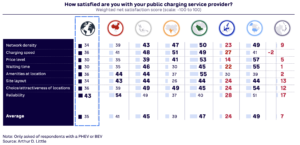A new report by Charles River Associates sheds light on a significant hurdle in the path to electrifying commercial fleets – the delivery of sufficient power to fleet depots through constrained electricity grids. While the benefits of electrifying fleets are undeniable, addressing this complex challenge is essential to ensure the transition to electric vehicles (EVs) is successful.
Many electricity systems in core markets were designed decades ago, not prepared for the increased demand driven by the transition away from fossil fuels. As a result, a gap has emerged between the capacity of existing grids and the rising electricity demand, exacerbated by growth in other industries such as data centers and heat electrification.
The report highlights that by 2030, Europe will see over 10 million commercial fleet EVs on its roads, which will translate to a 35% compound annual growth rate in the sector’s energy demand. Meeting this demand would require a substantial investment of approximately €45 billion by 2030 to ensure that commercial EVs are seamlessly integrated into the power systems and to guarantee a secure and decarbonized power supply.
Addressing this challenge is no small feat, but the report suggests that targeted grid capacity and renewable energy generation investments can unlock the potential of electric fleets. Several significant commitments have already been made, such as the UK ESO’s pledge of £16 billion (€18.7 billion) between 2021 and 2026 to facilitate the energy transition. The European Commission has also called for €584 billion of investments in electricity systems across member states. However, these upgrades will face competition from other industries requiring grid improvements.
Localized planning and upgrades are also fundamental. Fleets may have dozens, hundreds, or even thousands of electric vehicles charging simultaneously through a single grid connection, which could strain the grid or lead to local power outages.
For fleet operators to meet the targets mandated by initiatives like the EU’s Fit for 55 and to avoid potential disincentives for running internal combustion engine (ICE) fleets, they must align their operational planning with both distribution and transmission operators today. This alignment is crucial for creating awareness of the impending electricity demand hotspot, which could inform targeted investments. For new fleets, consulting with the electricity system operator to identify a suitable site with adequate grid support is crucial.
The report also emphasizes the importance of optimizing electrification decisions and costs. Fleet operators must consider low Capital Expenditure (CapEx) and enduring Operating Expenditure (OpEx) for charging solutions that meet their operational needs. Solutions exceeding connection capacity may require additional charging infrastructure, but they can expedite fleet electrification.
Furthermore, the optimal solution may incorporate mechanisms to provide flexibility for the local grid operator and create an additional revenue stream for the fleet operator. Smart charging options like V1G and V2G can help manage grid constraints and reduce peak-price spikes, while the integration of generation assets such as solar, wind, or battery storage can further lower OpEx and increase energy independence.
In conclusion, the road to fleet electrification presents a unique set of challenges, and addressing grid constraints is paramount to its success. By embracing targeted investments, smart charging solutions, and integrating renewable generation assets, fleet operators can not only navigate these challenges but also contribute to a more sustainable and efficient energy future.
Source: Electrifying fleets – challenges, opportunities and considerations | Charles Rivers Associates




